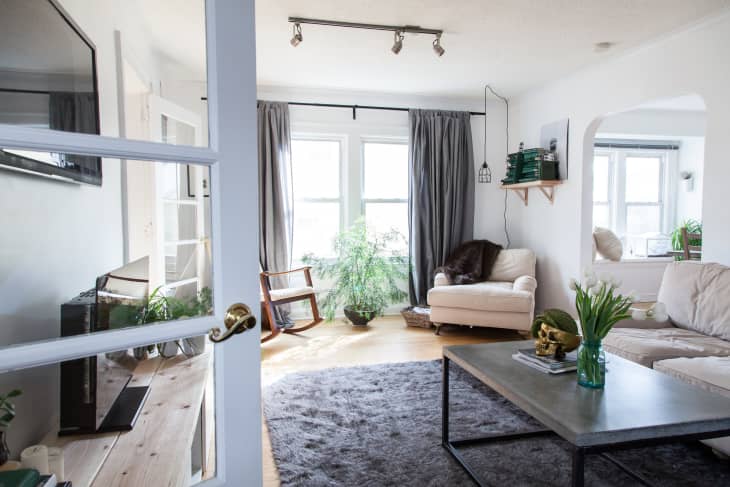Why Popcorn Ceilings Are Actually Pretty Great

Popcorn ceilings — formally known as acoustic ceilings and sometimes appetizingly referred to as cottage cheese — have gotten a bad rap over the years. Just Google “popcorn ceilings,” and you’ll find a slew of tutorials on how to remove them. So why do so many homes have them? After combing through research, I came to a surprising conclusion: Popcorn ceilings aren’t all that bad — in fact, they conceal many imperfections on your ceiling.
What Is a Popcorn Ceiling?
A popcorn ceiling is a bumpy, plaster-looking surface that’s commonly made from joint compound (drywall mud) or spray-on texture. Often considered an outdated design element, popcorn ceilings tend to have a negative reputation because of their hard-to-clean speckles, which can also accumulate dust. However, they were initially popular for their sound-blocking capabilities and easy installation.
Why Do Popcorn Ceilings Even Exist?
Popcorn ceilings originally gained traction in the 1950s, continuing through the ’80s. Although pretty polarizing today, this tactile feature involved a relatively fast and inexpensive application, which made it especially appealing during the post-World War II housing boom. As the economy prospered and suburbs expanded in the ’50s, a popcorn-style finish saved builders from having to meticulously smooth or sand over every ceiling imperfection. Popcorn ceilings were also previously common in apartment buildings and schools for noise reduction purposes.
How Do Popcorn Ceilings Work?
Here’s the short answer: Popcorn ceilings camouflage a multitude of sins. If you know anything about building a house, you know that finishing a dry-walled ceiling is an art form. In layman’s terms, once a ceiling is constructed, drywall seams are covered with paper or fiberglass tape and then covered over with joint compound (“mud”).
Once dry, more layers of mud coat are thinly applied and sanded until the surface is flawless. Taping and mudding, as the process is referred to, requires skill and can result in uneven ceilings, sagging seams, and visible nail dimples. If you are DIYing the work yourself or are on a tight budget, spraying this highly textured finish on your ceiling is a cheap and quick way to hide imperfections.
Plus, as their “acoustic ceiling” nickname suggests, popcorn ceilings also cut down on sound, which is attractive in high-traffic hallways and entryways — not to mention rooms with high ceilings that echo.
But Wait, What About Asbestos?
I know what you’re all thinking: asbestos. Synonymous with popcorn ceilings, this naturally occurring silicate mineral was used in early formulations of the ceiling treatment until it was banned by the Clean Air Act in 1978.
Oddly enough, the EPA advises against removing asbestos-bearing ceilings, stating, “Asbestos-containing materials that aren’t damaged or disturbed are not likely to pose a health risk. Usually, the best thing is to leave asbestos-containing material alone if it is in good condition.”
After 1978, paper-based and styrofoam materials were used in place of asbestos. So, if you currently have a popcorn ceiling, and it’s in okay shape, you’re safe.
So, Why Do We Hate Them So Much?
Popcorn ceilings aren’t for everyone. Haters tend to mention the highly porous, lumpy surfaces, which, aside from looks, catch dust and other small materials that can easily discolor over time. Their crater-like surfaces also tend to cast harsh shadows (which is not dissimilar to shining a flashlight under one’s face while telling a scary story). This can make rooms appear smaller.
How to Make the Best of Your Popcorn Ceiling
Next time you encounter a dreaded popcorn ceiling, try working with it before demolishing it. Your eyes (and lungs) may thank you.
Paint It
The key to making your popcorn ceiling pop is a bright, consistent finish. Because they have a tendency to discolor, a fresh coat of paint will make a world of difference. Here’s an added bonus: Once painted, the surface of a popcorn ceiling becomes less porous, making it less prone to further discoloration and dust collection.
Get Better Lighting
Ditch the recessed and flush ceiling lights. Good, soft lighting via table and floor lamps will reduce harsh shadows. This will turn your popcorn ceiling into a soft, subtle textural element.